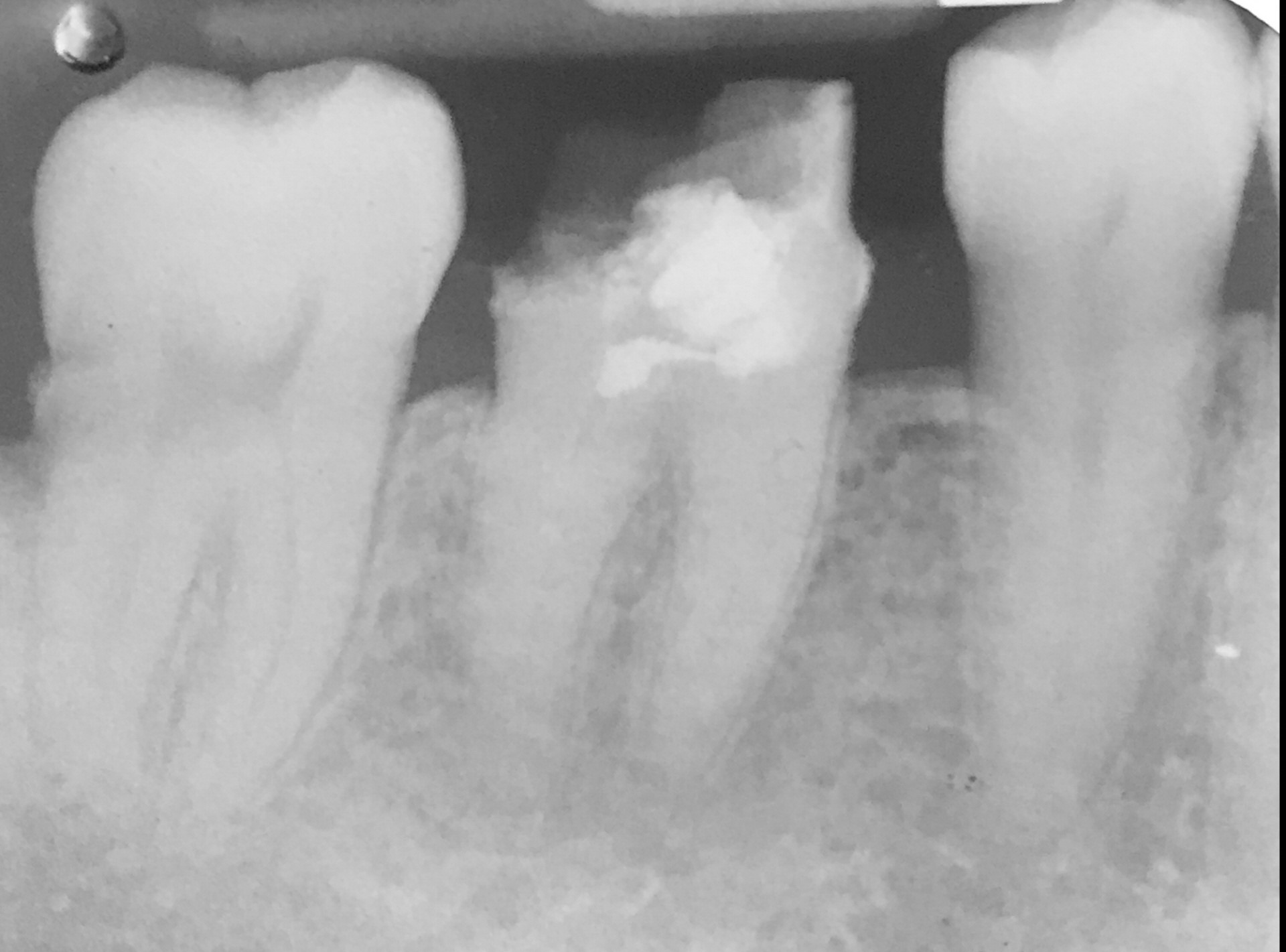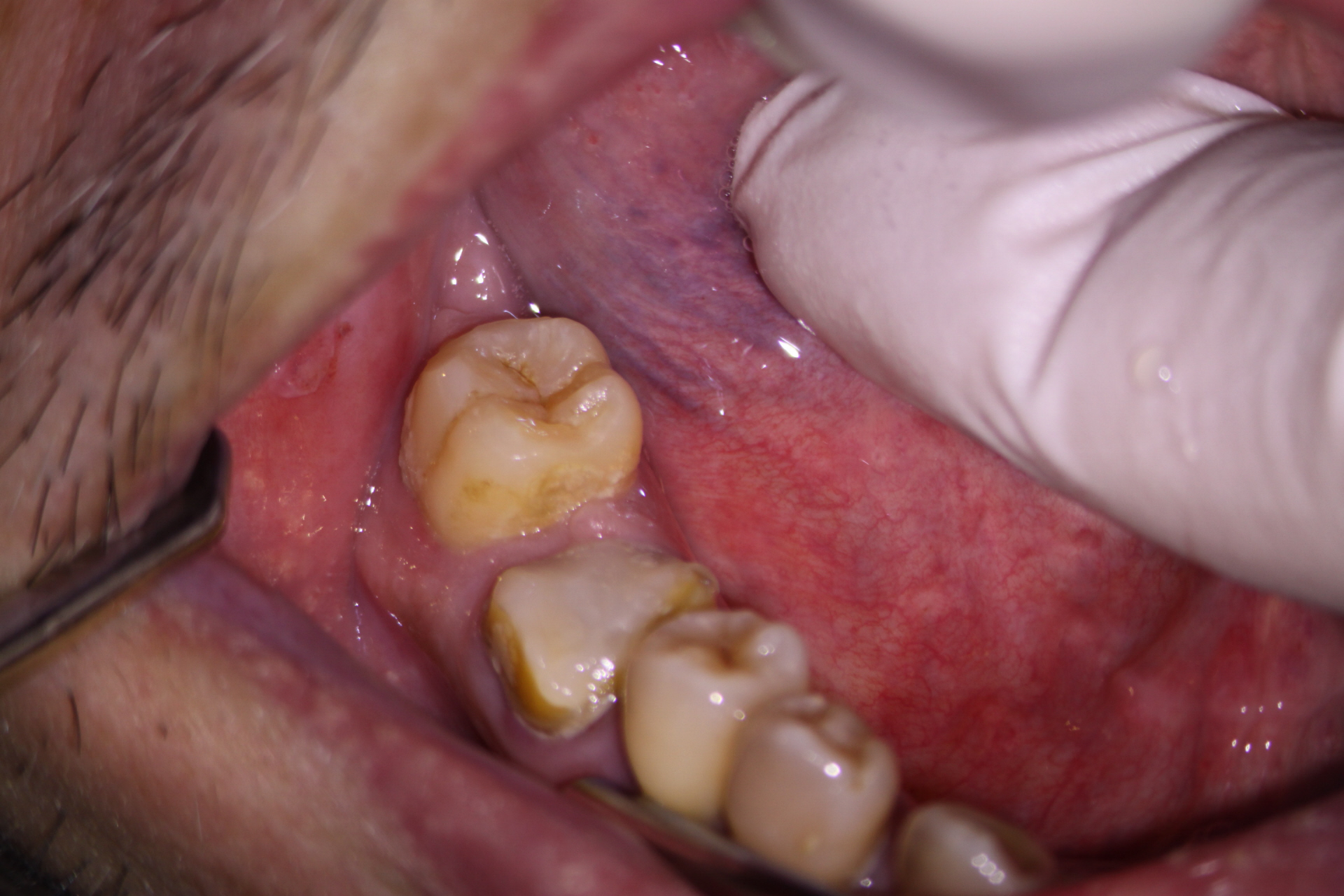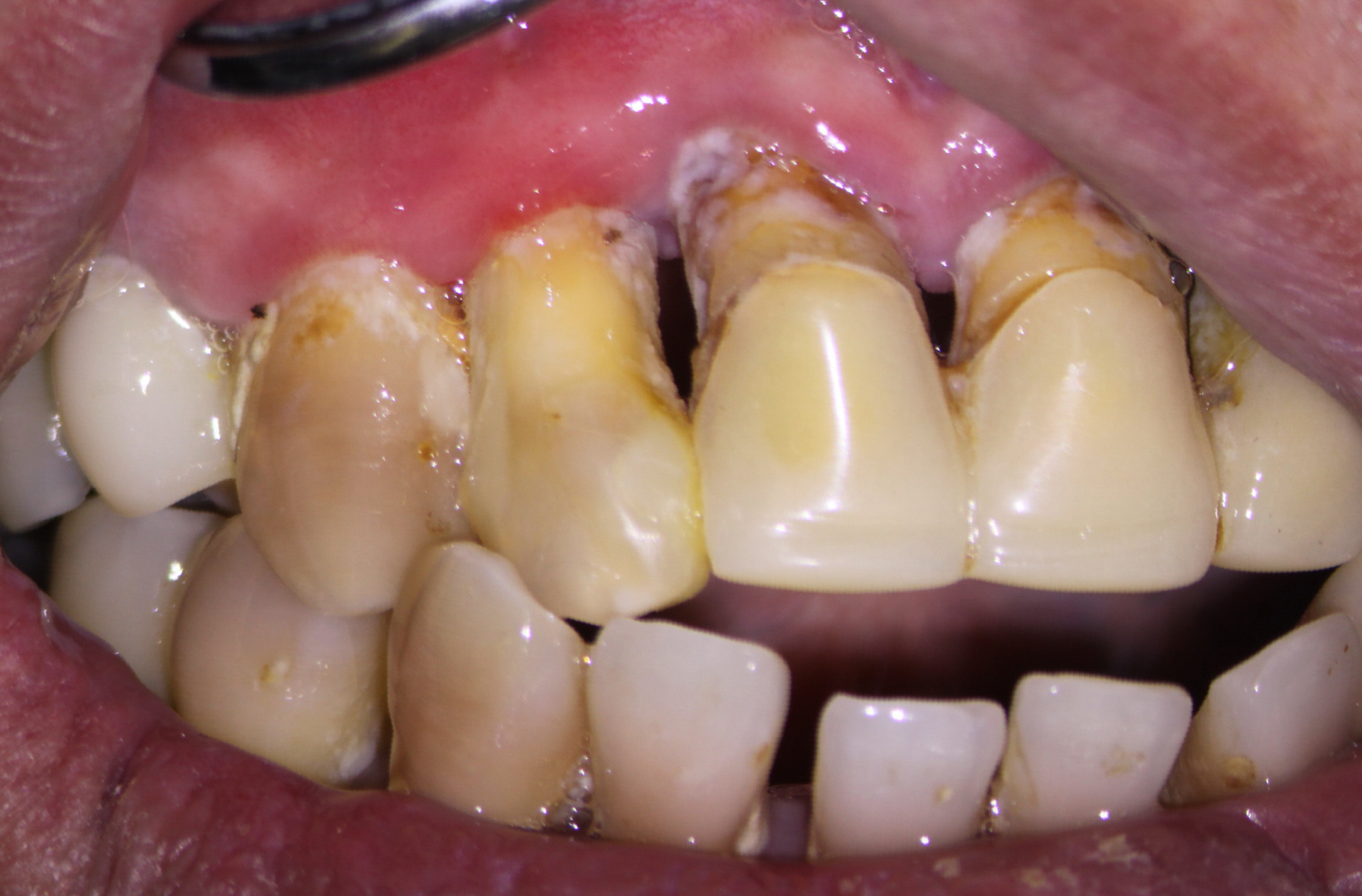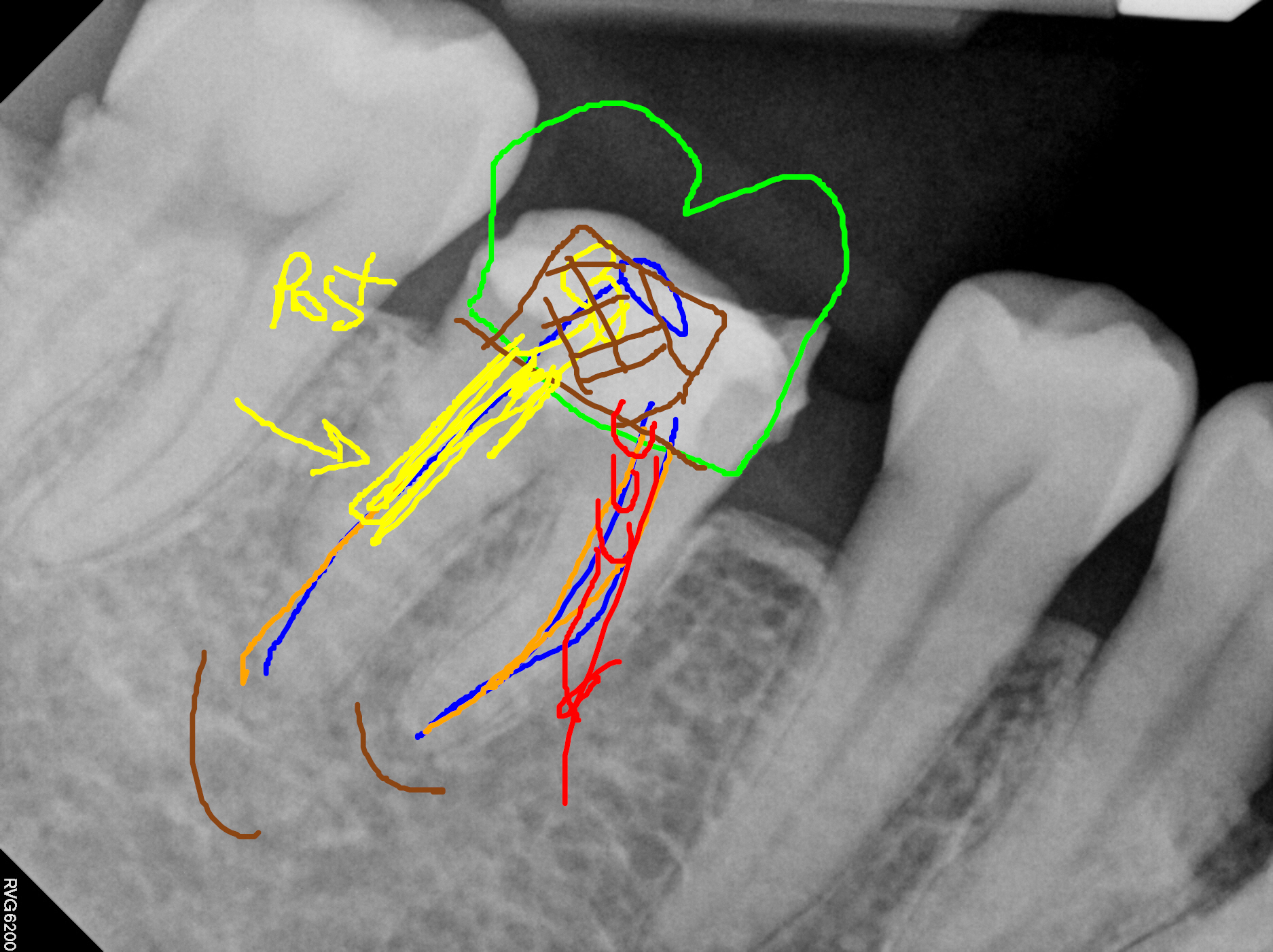Calcified Molar Case Needs Tx Plan
This 55 year old Asian patient was seen on for consideration of elective endodontic treatment regarding tooth # 46. The patient presented with a lost restoration/composite temporization and significant calcification of the canal spaces. The patient was completely asymptomatic. His hygiene was very poor and he had heavy plaque accumulations and generalized chronic periodontal disease with significant bone loss and pocketing ( D #47!!) The tooth was probably treated with some type of calcification inducing pulpotomy procedure, which is not uncommon outside North America.




cbCT imaging showed some material (paste?) in the coronal aspect of the D canal but otherwise no discernible pulp canals and no evidence of unusual periapical radiolucent findings.


I told the referring Dentist that attempting to find the canals in such cases can result in significant risk of perforation and ruining the tooth. Because of the lack of pathology and symptoms, sometimes cases like are best managed by simply preparing a post space into the D root and then restoring the case as is. It is unlikely that the patient will develop symptoms with such little pulp tissue in the canals. Even if the tooth does become symptomatic, the case would likely need to be handled with Endo surgery. However, considering his hygiene level, I would be VERY reluctant to perform any Endo surgical procedures on him with his current state of home care. Unfortunately, extraction of #46 and 3 unit bridge replacement #47-45 is NOT an option due to the Perio disease and 10 mm distal pocketing in #47.


The above diagram was helpful in trying to explain the issues, but I was unsure whether the patient had an appreciation (or was willing to be an active participant) in the treatment we were proposing.
So, are we willing to try to treat such a case? A very wise Prosthodontist once told me ” You can’t care more about the patient’s teeth than they do”. Without cooperation form the patient in dealing with the myriad of other issues in his mouth, it would be foolish to try to perform complex Dentistry that he does not appreciate nor will he maintain. These factors are best considered and discussed between the General Dentist and patient BEFORE referral.
